Arepas de Maíz are made with hominy corn or maíz peto. This is the traditional way to make Colombian arepas.You don't see people making them this way any more, because it requires time, they use masarepa or precooked corn meal as a shortcut.
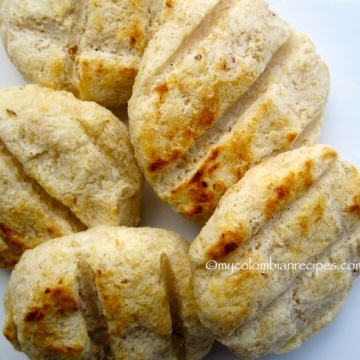
Arepas de Maiz Peto (Colombian Hominy Corn Arepas)
Ingredients
- 1 pound dried hominy corn Maiz
- Water
- Salt
- ¼ cup melted butter
Instructions
- Place the dried corn in a large bowl with water and let it soak overnight.
- Rinse and drain. Place it a large pot with salted water and cook over medium heat until the corn is soft, about 2 to 3 hours, stir occasionally, adding additional water if needed.
- Drain and let it cool.
- Place the hominy corn and butter in a food processor or food grinder and process until a dough is form. Transfer to a bowl mix thoroughly. Let mixture stand for five minutes.
- Form small balls with the dough. Place each ball between 2 plastic bags and with a flat pot cover flatten to ½ inch or form small patties with your hands.
- Add butter to a nonstick pan or a u201cparillau201d over medium heat. Place the arepas in the pan, and cook about 3 minutes on each side, until a crust forms or they are golden brown.Serve with butter and fresh cheese.
Nutrition
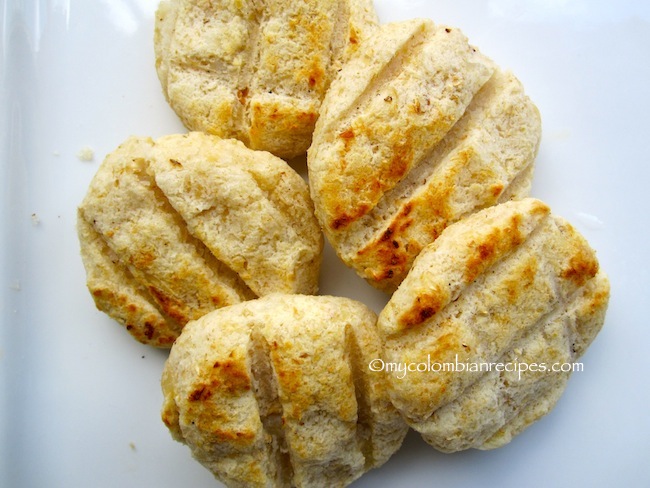
When I was a chiId, I would often stay at Mamita's house on the weekends and the breakfasts prepared by her were always the highlight of each day. The day for her would begin at 6 a.m. and I would awake to the smell of fresh coffee and hot chocolate.
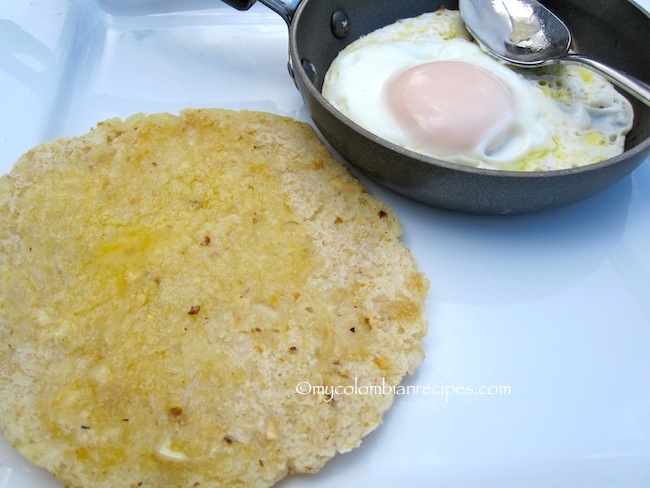
I would join Mamita in the kitchen, where she was always busy moliendo maiz (grounding dried corn) to make the masa (dough) for fresh arepas. Just after eight the rest of the family, my aunts and uncles who still lived at home, were seated at the table to enjoy a wonderful traditional Colombian breakfast. Corn arepas, eggs, cheese, coffee, chocolate, and Colombian cheese bread.
I had the best time staying at her house on weekends. She was my idol in every way!
Here is my recipe for arepas de maiz. Nowadays many Colombians, including me, make arepas from masarepa, because it's easier and faster, but this recipe is the traditional recipe for corn arepas made from scratch.
Buen provecho!
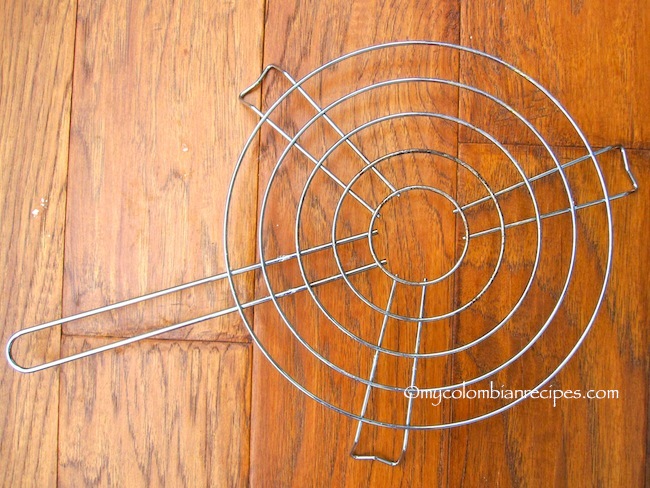
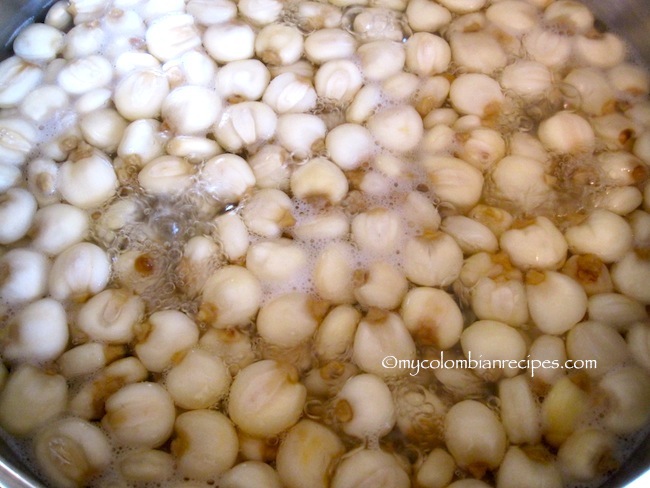
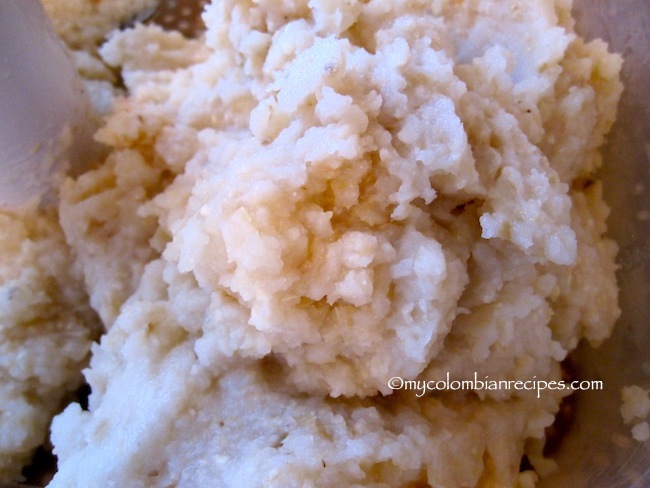
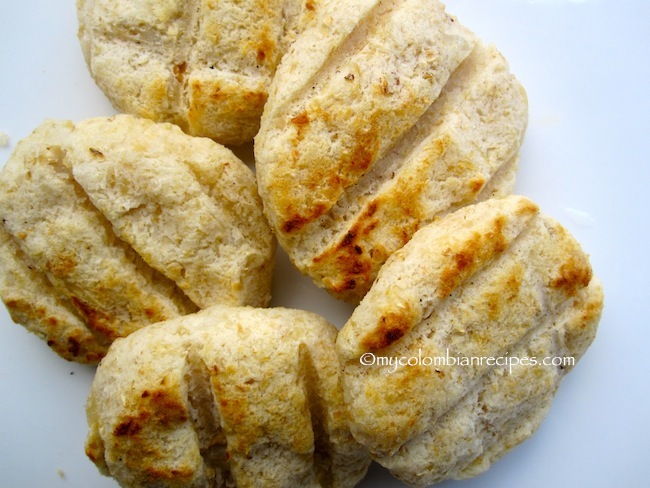


Joanne
Areas are one of my favorite foods! Thanks for this great recipe.
Belinda @zomppa
These homemade ones are awesome! Now to top off with some dulce de leche!
sippitysup
I fell hard for arepas in Venezuela and have even made them at home. This is even further inspiration. GREG
Wendy
Hi can I use the canned version of hominy corn to make these I can’t find the one in the bag where I live and if so do I still have to pre soak and cook them before the rest of steps?
Angie@Angie's Recipes
I don't think I have ever had areas...they look rustic, healthy and delicious.
PJ
I make these vegan by using olive oil instead of butter. They are wonderful and my vegan husband loves them as much as I do. Making them is a tribute to Ofelia Pascualy Olaya who taught me about Colombian cooking in her Bogota home. She passed into the next world recently and will live on in my memory and my cooking. Ofelia was also a fantastic fiber artist, too.
ruth
Such a sweet story and a lovely recipe. Sounds like the perfect family reakfast!
Juliana
I never had anything like this Erica...so interesting...and nice reading about your childhood 🙂
Hope you are having a fabulous week!
grace
i love seeing hominy in places other than soup! these look extra tasty, erica!
Alexandra
My mom grew up in Baranquilla- I spent my American childhood learning a lot of receipes at her elbow in the kitchen. Here is a family favorite that I plan on passing to my children.. I have never seen it anywhere but my aunts, uncle's and cousins all make it.
arepas con huevos-
1 package masarepa
1 cup sugar
1 teaspoon salt
2 cups cold water
oil to fry in- NOT OLIVE OIL- Use canola or lard or peanut or anything else that has a high smoke point
eggs
use a cast metal pan/pot-caldero, my mom always called it that. I've tried the thin sided alumiminium pans and they don't work well. cast iron/cast aluminium only!
-mix the dry ingredients in a bowl until well blended
-slowly add water until a dough is formed
-break apart and form balls-about the size of your hand
-smush to about 1/4 inch thick
-smooth the edges- it is very important that they be smoothed-keep dipping your fingers in water to help with this-don't use oil to do it with-it will make the arepa too heavy
-fry
now start cracking eggs - one per small cup-season now if you like
-fry until light golden brown-they should puff up, if they do then..
-remove from oil and put a slit in it
-add the egg-the size of the cup will help with this
-return to oil until dark golden brown-the egg should be cooked
-remove from oil, drain and cool
!!!****--if they don't puff up..don't worry-they're delicious anyway---***!!!
Enjoy and Good luck!
Erica
Thank you,everyone!
Norma-Platanos, Mangoes and Me!
Those were the days when everything was made at the moment...good memories...
Leah
Is there a way to make arepas from corn meal?
Erica
I didn't try making them with corn meal, bu you can try it.....the texture will be different.
Jess
Cornmeal is ground from raw dry corn, not nixtamalized / hominy corn. Masa harina de maiz (used to make tortillas) would be a closer substitute because it is also made from hominy. The hominy isn't cooked as long before grinding so the texture and flavor will be a little different but it will be similar and the nutrition will be the same whereas plain cornmeal isn't as nutritious. Nixtamalization improves the nutrients.
Alicia
I'm in Bogotá at the moment and I can't wait to get home to Australia and try out this recipe for myself! But in the meantime, I'll enjoy eating the authentic arepas 🙂
Crystal
My Office-mate makes these (or similar) and brought me some to try. I absolutely LOVE the way she makes them. She uses her family's recipe and grinds the corn with a meat grinder.
She also brought me a parilla.
So I took home my arepa, cooked it and finished with butter and cheese (as prescribed).
I came to work the next day and exclaimed "It's no wonder these are so popular - they taste just like popcorn!"
She gave me a funny look and asked how I cooked the arepa. I said "just like you said. with the parilla over my stove top. Oh. I have a gas stove."
She laughed and asked if I had a cast iron frying pan, and if so, that would give me more proper results.
LOL. Love them cooked "properly" with over-easy eggs and ham for breakfast.
Or cooked over my gas burner with lots of butter and salt. MMMMMM!
Cynthia
You indicate that the basic corn in this recipe is hominy corn. Various references indicate that this would be a pre-treated big kernel corn. Various references indicate that the flour for authentic arepas are not made from a treated corn. It is called masarepa rather than masa harina. I avoid non-organic corn as most industrial farming systems for corn utilize herbicides near and on the plants. Some scientists point out the correlation of these herbicides being utilized with the upward statistical trending of our GI problems. So I have been trying to find an organic masarepo or a method for making my own from an organically grown corn. Can you help?
Monica
masa arepa - That means Arepa flour. Hominy is what is used to make these if you want them to be authentic. If you can't find it, use Pan without the lime and they'll be ok. It's finer but tasty. I like the courser texture and enjoy it more which is why I am ordering hominy online. There are many names for the same thing. It's just very common now to have a corn flour that's prepped already. Avoid the ones with lime or lemon as they are really for tortillas and not for arepas. You're arepas will taste off. You need one without the lime. That's the key here or you'll end up with horrible tasting arepas.
Jessica Evans
Cynthia, it is a common mistake on the internet to believe that masarepa is made from untreated corn. Monica is correct that masarepa is made from hominy corn. Hominy corn has been treated with lime (meaning calcium hydroxide/slaked lime, NOT lime juice).
The prepared flour for Mexican-style corn tortillas (called masa harina de maize) is ALSO made from hominy corn that has been treated with slaked lime (not lime juice. Not lemon juice either!)
There is a lot of misunderstanding between Colombians and Mexicans, who each think the other is eating untreated regular corn! If you do a little research you will discover that there is nowhere in South, Central, or North America where the indigenous people used untreated corn....corn was always treated with some kind of alkaline substance, such as lime or wood ash. Usually the corn was soaked with alkaline water, then cooked, but the Hopi people ground the corn first and then mixed it with wood ash to make it alkaline.
The corn that has been treated with an alkaline substance is more digestible and nutritious. If corn is used as a staple food without some kind of alkaline treatment it causes pellagra, a disease of Niacin deficiency! Pellagra was common in the white colonist population in the Southern states of the USA, and also in food-aid-dependent parts of Africa, where people were relying on corn as their main staple food but weren't treating it first.
The only significant difference between masa harina de maize and masarepa is the texture. Masa harina de maize is very finely ground, where masarepa is more coarse.
Monica Prieto
There is a big difference in taste though and not all mixes are treated with a lime. I didn't realize it was different from lime [the fruit] but I can definitely say that any of the lime treated corn meal mixes do not taste at all like any Colombian arepas I've eaten. The one that I see the most used in Colombia is Pan and it has no lime in it. It uses some other items to treat it. You can look it up online and you'll see the ingredients. Also, you can buy Hominy corn online through Amazon and I can tell you from looking at the packaging it's plain untreated corn with no lime or any other product. I've made arepas both ways and everyone in my family rejected the lime treated ones. They have a taste that isn't quite right - sorta bitter. The others without that treatment have a nicer flavor. I would recommend either getting the dried hominy or Pan to make these close to the Colombian version.
Jessica Evans
Hi Monica, thank you so much for your reply. I will bow to your superior knowledge regarding the PAN arepa flour, but even though it doesn't have it listed as an ingredient, the dry hominy corn for sale on Amazon has already been treated with lime (also called calcium hydroxide or slaked lime.) That is why it doesn't have the hard shiny outer shell / skin of the corn kernel still on it. The corn kernels are soaked in a water and calcium hydroxide solution that dissolves the shell. The calcium hydroxide is all washed off afterwards, when the softened skins are rinsed off of the kernels. It certainly should not leave a bitter taste behind!
Did you use Mexican-style masa harina de maize for your test of nixtamalized corn arepas, or did you do the nixtamalization yourself? If you want to do it yourself you have to start with field corn, not hominy corn, since hominy corn has already been treated. With very best wishes, Jessica
Dori
Thank you bith pan and goya enrich their mararepa with folic acid. This makes me very sick. Great to have a safe recipe.
Cynthia
Can you use canned hominy instead of cooking dried hominy? Will the dough still hold together?
lynne
I was wondering the same thing. Did you ever find out if you could use canned hominy?
Erica Dinho
Yes, I used canned hominy before.
lynne
What is the ration of canned hominy to butter. The recipe above says to start with one pound of dried. How much canned would you need to use? Or how much butter do you need for one can of hominy?
Thanks!
Rob
I'm a chef and when i work breakfast shifts. I love to make these for the staff. My Colombian coworkers absolutely love them.
OG
Thank you so much for this website and sharing all of these recipes! I grew up and live in NY often visiting lots of family in Antioquia. We are lucky to have decent Colombian restaurants in NYC but they often don't compare to the real deal and many of your recipes truly take me back there. I get to share your recipes with my Colombian family members living in NY that are homesick and their resulting smiles are priceless. More people need to know (in Colombia and USA) that Arepas made with Hominy have tons of Corn flavor and crunchiness that is totally lost with the common cornmeal version. Thanks again!